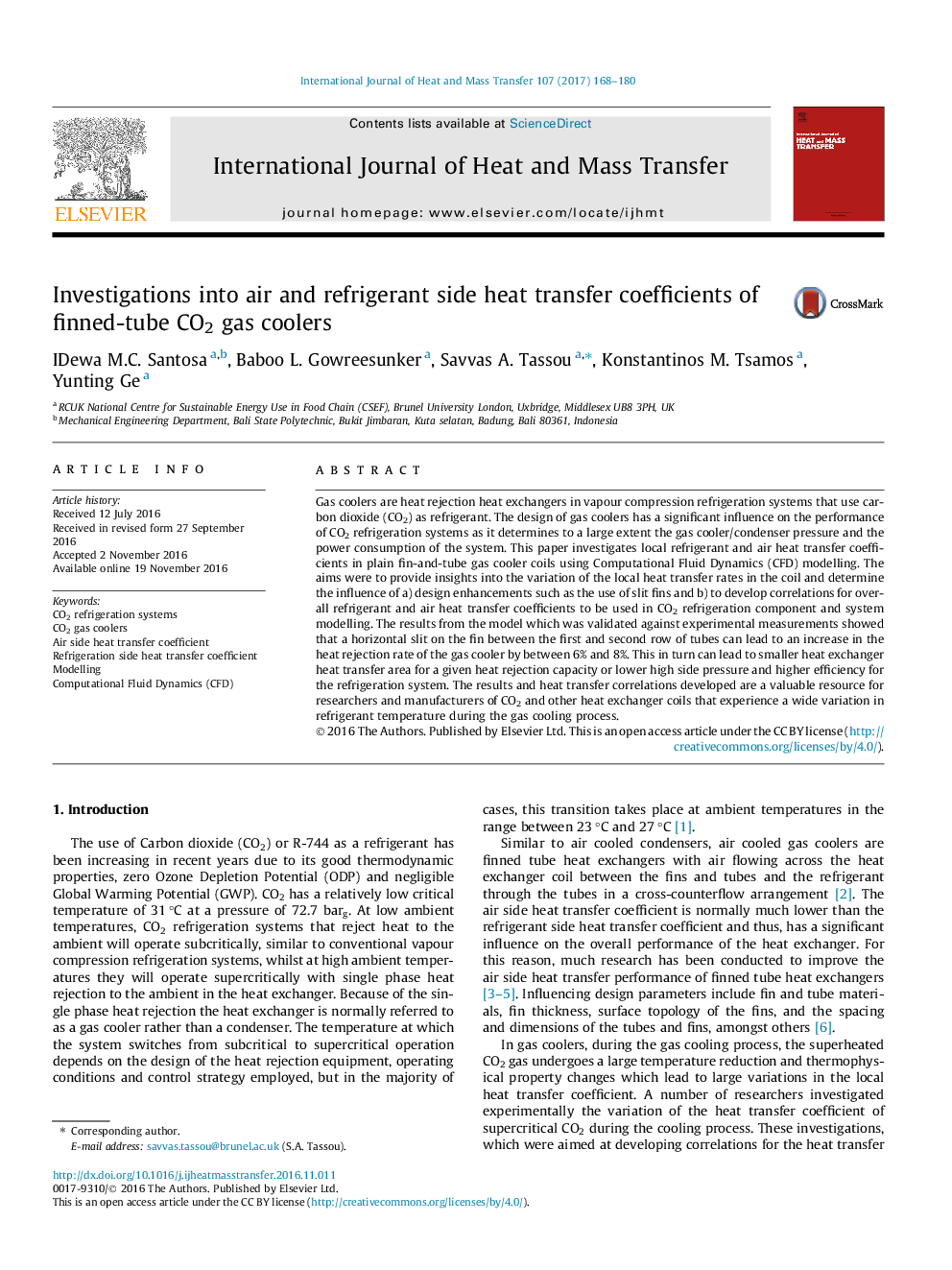| کد مقاله | کد نشریه | سال انتشار | مقاله انگلیسی | نسخه تمام متن |
|---|---|---|---|---|
| 4994577 | 1458035 | 2017 | 13 صفحه PDF | دانلود رایگان |

- Experimental investigations established the performance characteristics of CO2 gas coolers.
- CFD modelling is able to adequately represent the heat transfer characteristics of gas coolers.
- A horizontal slit fin can improve gas cooler performance by 7%.
- Refrigerant side heat transfer coefficient varies significantly along the tubes of the gas cooler.
- Variation of refrigerant side heat transfer coefficient should be taken into account in gas cooler design and modelling.
Gas coolers are heat rejection heat exchangers in vapour compression refrigeration systems that use carbon dioxide (CO2) as refrigerant. The design of gas coolers has a significant influence on the performance of CO2 refrigeration systems as it determines to a large extent the gas cooler/condenser pressure and the power consumption of the system. This paper investigates local refrigerant and air heat transfer coefficients in plain fin-and-tube gas cooler coils using Computational Fluid Dynamics (CFD) modelling. The aims were to provide insights into the variation of the local heat transfer rates in the coil and determine the influence of a) design enhancements such as the use of slit fins and b) to develop correlations for overall refrigerant and air heat transfer coefficients to be used in CO2 refrigeration component and system modelling. The results from the model which was validated against experimental measurements showed that a horizontal slit on the fin between the first and second row of tubes can lead to an increase in the heat rejection rate of the gas cooler by between 6% and 8%. This in turn can lead to smaller heat exchanger heat transfer area for a given heat rejection capacity or lower high side pressure and higher efficiency for the refrigeration system. The results and heat transfer correlations developed are a valuable resource for researchers and manufacturers of CO2 and other heat exchanger coils that experience a wide variation in refrigerant temperature during the gas cooling process.
Journal: International Journal of Heat and Mass Transfer - Volume 107, April 2017, Pages 168-180